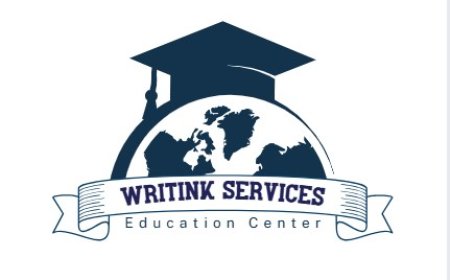How can I learn Tableau effectively?
Learn how can I learn Tableau effectively by practicing real datasets, following tutorials, exploring dashboards, and applying visualization skills daily.

Introduction
In todays data?driven world, organizations across industries rely on data visualization to make informed decisions quickly. Tableau has emerged as one of the most powerful tools for visual analytics and interactive dashboards. Whether you are a beginner eager to step into data analytics or a professional looking to upskill, learning Tableau courses in Chandigarh effectively can significantly boost your career opportunities. This article will walk you through proven methods, structured steps, and practical tips to master Tableau with confidence.
Understand What Tableau Is and Why It Matters?
Before diving into the learning process, its essential to know what Tableau offers. Tableau is a business intelligence platform that allows you to connect, visualize, and share data seamlessly. Its drag?and?drop interface makes it beginner?friendly, while its advanced featureslike calculated fields, parameters, and interactive dashboardsmake it a favorite among data professionals.
Build a Strong Foundation
1. Familiarize Yourself with the Basics
Start by learning the Tableau interface. Understand how to connect to different data sources such as Excel, SQL databases, or cloud services.
-
Learn about worksheets, dashboards, and stories.
-
Explore basic chart types like bar charts, line graphs, and maps.
-
Practice creating simple filters and sorting data.
2. Explore Online Learning Platforms and Courses
A structured learning path can save you time and effort. Look for curated learning resources, tutorials, and instructor?led training. Many professionals also choose Tableau certification courses in Chandigarh to gain in?depth knowledge through guided sessions and hands?on practice.
Practice Regularly
3. Work on Real?World Datasets
The best way to learn is by doing. Download public datasets from government portals, Kaggle, or Tableau Public.
-
Create dashboards that answer practical questions.
-
Experiment with advanced features like calculated fields and table calculations.
-
Share your work on Tableau Public to get feedback from the community.
4. Set Small, Achievable Goals
Break your learning into smaller milestones. For example:
-
Week 1: Learn basic charts.
-
Week 2: Create interactive dashboards.
-
Week 3: Experiment with parameters and advanced calculations.
Utilize Advanced Features
5. Learn to Clean and Prepare Data
Tableau Prep helps you combine, shape, and clean data before visualization. Understanding data preparation is crucial because high?quality visualizations depend on well?structured data.
6. Explore Advanced Analytics
Once you are comfortable with the basics, start using advanced features such as:
-
Level of Detail (LOD) expressions.
-
Trend lines and forecasting.
-
Data blending and joining multiple data sources.
Join Communities and Participate in Challenges
7. Engage With the Tableau Community
Tableau has a vibrant community of users worldwide. Participate in forums, attend webinars, and join online groups. Ask questions, share dashboards, and learn from others experiences.
8. Take Part in Makeover Monday or Similar Initiatives
Makeover Monday is a weekly data visualization challenge. By participating, you learn new techniques, improve your design skills, and stay motivated.
Consider Professional Training for Career Growth
If you want to move beyond self?learning and aim for recognized credentials, consider joining instructor?led programs or workshops. Many learners opt for Tableau certification courses in Chandigarh to get hands?on training, practical exposure, and guidance from experienced mentors, which can significantly enhance employability.
Conclusion
Learning Tableau effectively is a journey that combines understanding the basics, practicing regularly, exploring advanced features, and staying connected with the community. By setting clear goals and using a mix of free resources, real?world projects, and professional courses, you can quickly gain expertise in creating insightful dashboards and impactful data visualizations. With consistent effort, Tableau can become one of your most valuable career tools.
FAQs
Q1. How long does it take to learn Tableau?
Most learners can grasp the basics within a few weeks, but mastering advanced features takes consistent practice over several months.
Q2. Do I need prior programming knowledge to learn Tableau?
No, Tableau is designed to be user?friendly. However, knowledge of data concepts can be helpful.
Q3. Can I learn Tableau for free?
Yes, there are free tutorials, Tableau Public resources, and community forums. You can start without any cost.
Q4. Is Tableau useful for non?technical professionals?
Absolutely. Tableaus intuitive interface makes it suitable for professionals in marketing, finance, sales, and more.
Q5. What career opportunities open up after learning Tableau?
You can pursue roles like data analyst, business intelligence developer, or visualization specialist in various industries.




























